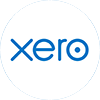May Questions and Answers
Newsletter issue - May 2016
Q1. How do I work out my share of a capital gain?
I owned a quarter share in a property that was sold in 2015. It was not my main residence at any time during my period of ownership. I am trying to work out my share of the capital gain arising on the property. Do I simply divide the purchase price, sale price, and any improvement costs by four to work out how much tax I will have to pay?
A: Assuming that all the improvement costs and the sale proceeds relating to this property were 25% your responsibility, then yes, you just show the figures relating to your share of the gain on your tax return. However, it may be worth providing HMRC with clarification in the 'additional information' section of the return.
Q2. Are my savings covered by the personal savings allowance?
I have several savings accounts. Most of the accounts have always had tax deducted from the interest paid before I receive it. However, I understand that one of my accounts is 'tax-free'. Interest has always been paid gross and I have never included it on my tax return. I am a basic rate taxpayer. Is the 'tax-free' account interest included in the personal savings allowance limit?
A: From 6 April 2016, banks and building societies will pay interest on all savings accounts gross. In parallel with this change, the new personal savings allowance (PSA), also introduced from 6 April 2016, means every basic-rate taxpayer can earn £1,000 interest without paying tax on it (higher rate taxpayers have a PSA of £500), currently equivalent to the interest on almost £75,000 in some easy-access savings account.
Interest that is already tax-free isn't included - so this includes ISA interest and Premium Bond 'winnings'. Interest from these will still be paid tax-free, but it just won't count toward your PSA limit. So, if you get £500 in ISA interest, and you're a basic-rate taxpayer, you'll still have £1,000 of PSA to cover other interest.
Q3. Will I be entitled to tax-free childcare?
I have heard that HMRC are launching a new tax-free childcare scheme. I am currently employed and earn £70,000 a year. My employer does not provide any support for childcare. Will I be eligible to join the new scheme?
A: HMRC have confirmed that a new tax-free childcare scheme will be launched from early 2017. To qualify, parents will have to be in work, and each earning around £115 a week and not more than £100,000 each per year.
Tax-Free Childcare does not rely on employers offering the scheme, unlike the current scheme ('employer-supported childcare'). Any working family will be able to use the new scheme, provided they meet the eligibility requirements.
Once launched, you will be able to open an online account, which you can pay into to cover the cost of childcare with a registered provider. This will be done through the government website, GOV.UK.
For every 80p you or someone else pays in, the government will top up an extra 20p. This is the equivalent to the current basic rate of income tax - hence the 'tax-free childcare' name given to the new scheme. The government will top up the account with 20% of childcare costs up to a total of £10,000 - the equivalent of up to £2,000 support per child per year (or £4,000 for disabled children). The scheme will be available for children up to the age of 12.

